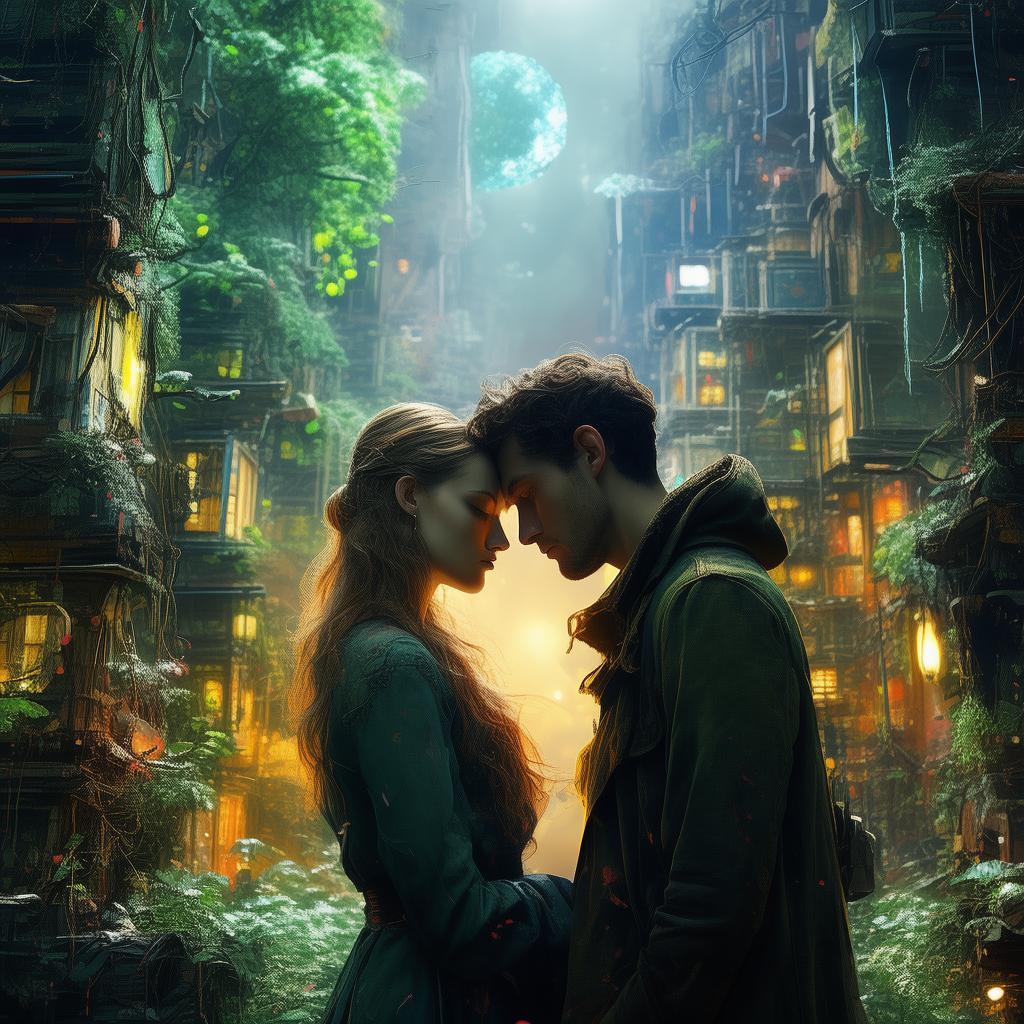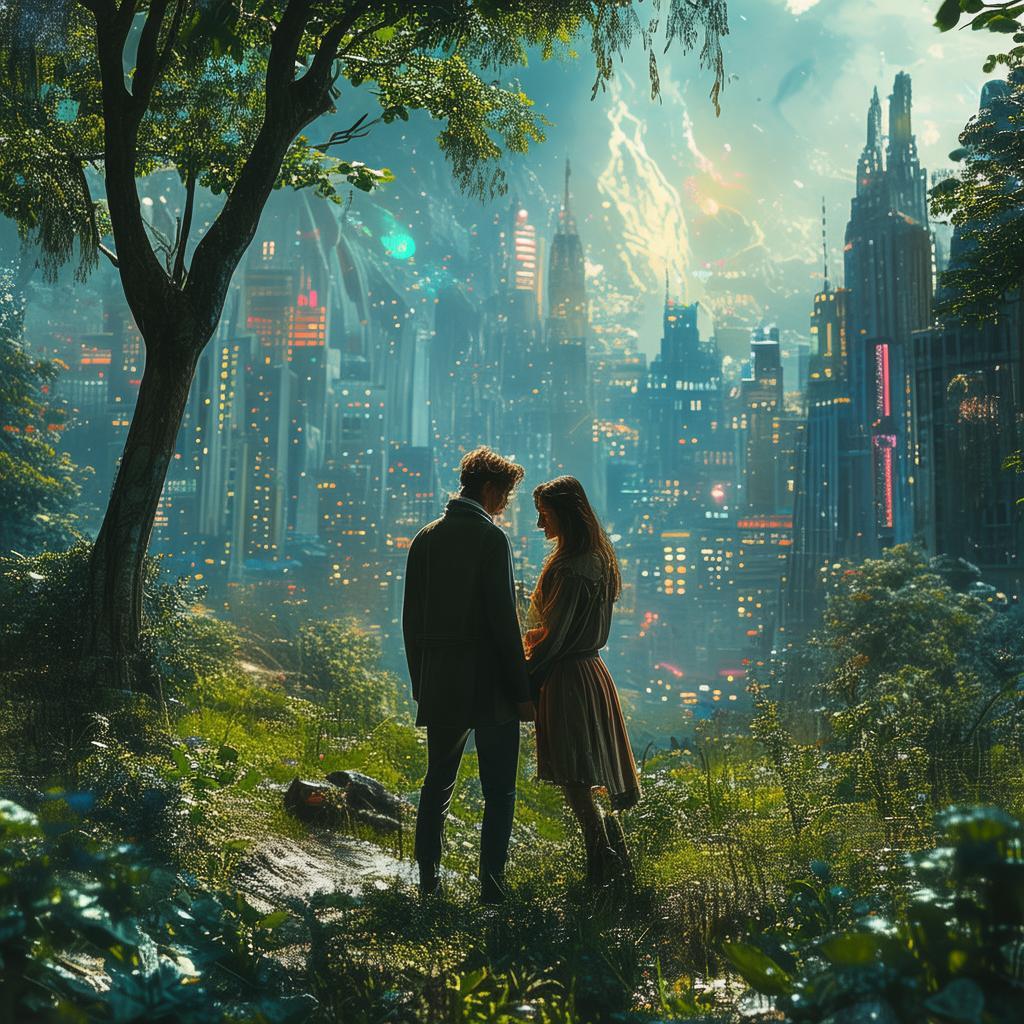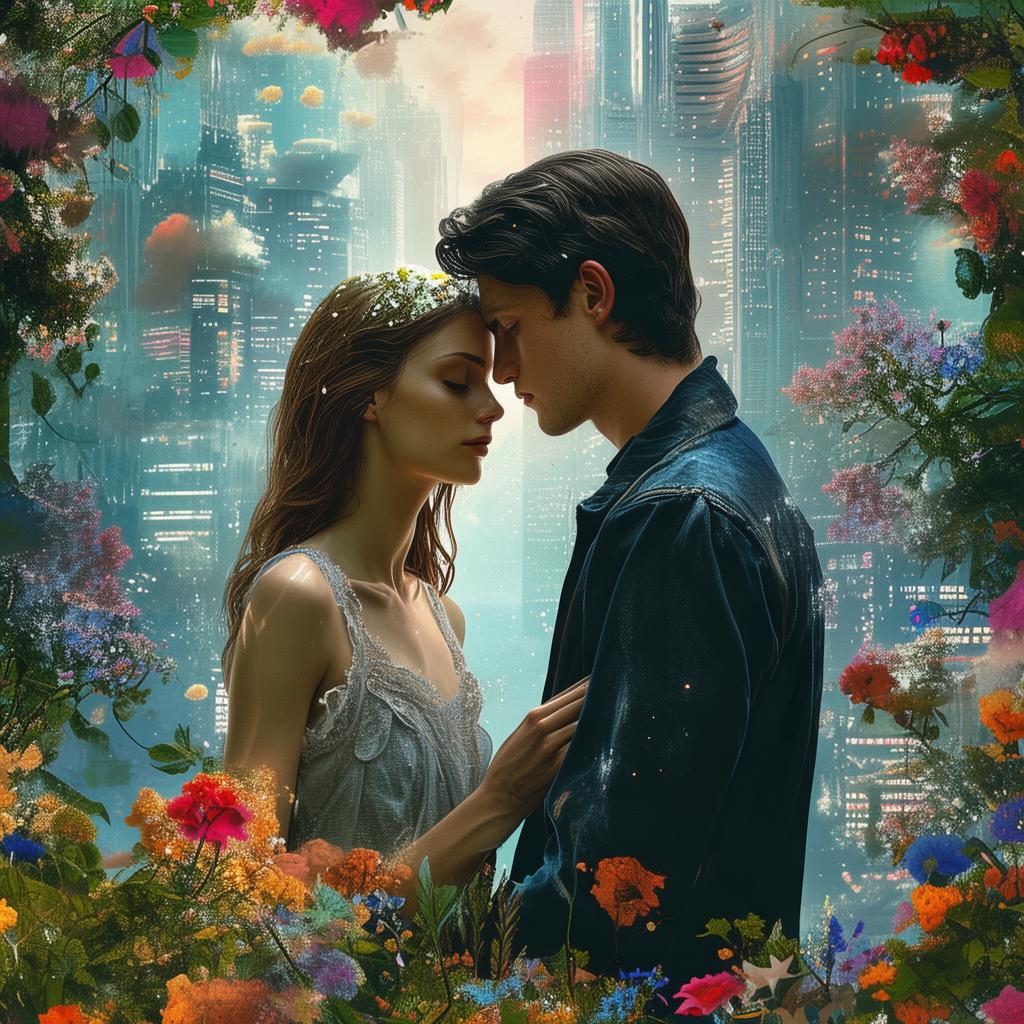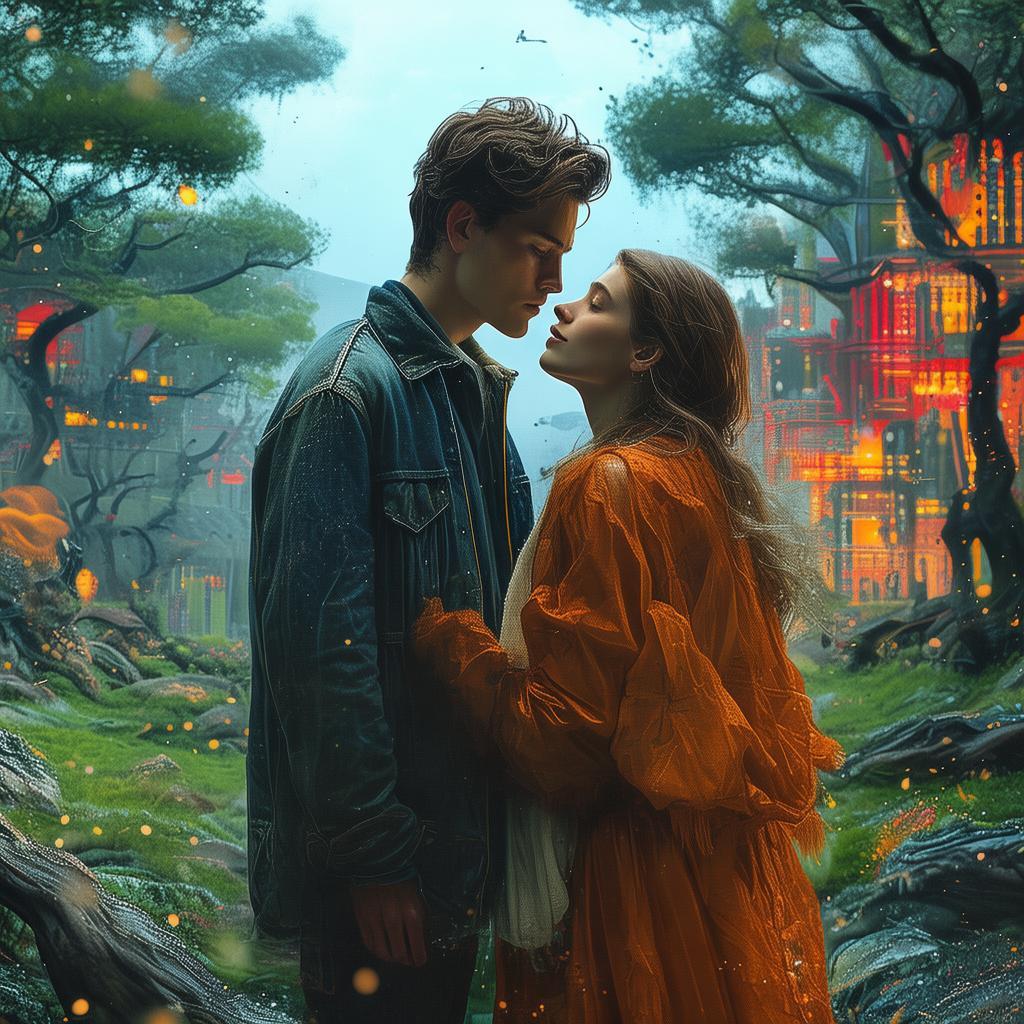The Enigma of Love at the Louvre
Paris was alive with the scent of history and the whispers of love. It was here, amidst the grandeur of the Louvre, that the enigmatic story of Eliza and her unrequited love for the man she had never seen began.
Eliza was a young artist, her hands as deft as her heart was unrequited. She had spent countless hours sketching the masterpieces of the Louvre, each stroke of her brush a silent plea to capture the essence of love in her art. Yet, her heart ached for a man she had only seen once, in a fleeting moment at the museum's grand staircase.
He was tall, with eyes that seemed to carry the weight of the world, and a smile that could light up the room. Eliza had seen him only once, and in that brief encounter, she had felt a connection so profound that it left her breathless. She had tried to find him, to reach out, but he had vanished into the crowd, as elusive as the shadows that danced around the edges of the paintings.
One day, as Eliza wandered through the Louvre, she stumbled upon a painting that seemed to call out to her. It was a portrait of a woman, her eyes filled with sorrow and longing, her lips pursed in a silent plea. The painting's title was "The Enigma of Love," and it felt as if it had been waiting for her all along.
Intrigued, Eliza spent hours studying the painting, trying to understand the woman's story. She was captivated by the artist's skill, the way the woman's features were rendered with such depth and emotion. She began to sketch the painting, pouring her own heart into the work, hoping to find some semblance of closure.
As the days passed, Eliza found herself drawn back to the painting, her sketches growing more detailed and emotional. She felt a strange connection to the woman in the painting, as if her own story was being told through the artist's brush. She began to wonder if the painting was more than a mere depiction of a woman's sorrow; perhaps it was a sign, a message from the universe.
One evening, as the Louvre was preparing to close, Eliza found herself standing before the painting once more. She had decided to leave her sketch, a gift to the woman in the painting, hoping it might find its way to her. As she placed the sketch on the pedestal, she felt a strange sensation, as if something was drawing her to the painting.
In that moment, as the lights dimmed and the museum emptied, Eliza turned to leave. But something held her back. She looked at the painting one last time, and as her gaze met the woman's eyes, she felt a surge of warmth. It was as if the painting was speaking to her, whispering words of comfort and understanding.
The next morning, Eliza returned to the Louvre, eager to see if anyone had found her sketch. To her astonishment, the painting had been replaced with a new one, and the sketch was gone. She was disheartened, feeling as though she had lost touch with the connection she had felt.
However, as she wandered through the museum, she found herself drawn to a different painting. It was a portrait of a man, his eyes filled with a similar depth of emotion, and his smile just like the one she had seen in the grand staircase. The painting was titled "The Promise of Love."
In that moment, Eliza realized that the painting had been a guide, a sign from the universe. She had been searching for the man she had seen, and the painting had led her to his portrait. It was as if the universe was trying to tell her that he was real, and that their connection was meant to be.
Determined to find him, Eliza began to sketch the portrait, pouring all her hope and longing into the work. She posted her sketches on social media, hoping to reach out to someone who recognized the man. To her amazement, the post went viral, and soon, she had a flood of messages from people who had seen the man at the Louvre.
Through these messages, Eliza learned that the man was a renowned art historian, Dr. Jean-Luc Dupont. She arranged to meet him at the Louvre, and as they stood before the painting that had brought them together, she felt a sense of serendipity wash over her.
Dr. Dupont was everything she had hoped for and more. They shared a deep and immediate connection, as if their lives had been intertwined from the moment they first laid eyes on each other. They spent hours talking, laughing, and exploring the museum together, their hearts finally finding the love they had both been searching for.
But as their relationship blossomed, Eliza couldn't shake the feeling that there was something more to the painting and the connection she had felt. She decided to delve deeper into the story behind "The Enigma of Love," hoping to uncover the truth behind the mysterious woman's sorrow.
Through her research, Eliza discovered that the painting was based on a real-life story of a woman named Isabella, who had loved a man so deeply that she had dedicated her life to art, hoping to capture the essence of their love in every brushstroke. Isabella's story had ended tragically, with her love never returned, leaving her to spend her days in the Louvre, surrounded by the art that had once brought them together.

As Eliza learned Isabella's story, she couldn't help but see parallels with her own. She realized that she had been searching for the same thing that Isabella had found in art: a way to express her love and find solace in her sorrow.
In a twist of fate, Eliza discovered that Isabella had left behind a journal, hidden away in the Louvre's archives. She decided to read it, hoping to find some answers to her own questions. To her shock, she found that Isabella had been searching for the same man that Eliza had seen that day in the grand staircase.
The journal revealed that Isabella had been the one who had seen the man first, and it was she who had felt the connection that Eliza now felt. The painting had been her attempt to reach out, to find someone who understood her love and her sorrow.
As Eliza read the journal, she realized that she had been walking in Isabella's footsteps, searching for the same love that had eluded both of them. It was as if Isabella's spirit had been guiding her, leading her to the man she had been searching for all along.
With this revelation, Eliza and Dr. Dupont's relationship deepened even further. They realized that they had been connected not just by their shared love for art, but by a deeper, more profound connection that transcended time and space.
In the end, Eliza's journey to find love was not just about finding the man she had seen in the grand staircase, but about understanding the depth of her own love and the power of art to bring people together. It was a story of serendipity, of finding love in the most unexpected places, and of the enduring power of the human spirit.
And so, as they stood before the painting that had brought them together, Eliza and Dr. Dupont knew that their love was real, that it had been waiting for them all along. The painting, with its enigmatic woman and her silent plea, had been a guide, a reminder that love can be found in the most unexpected places, and that sometimes, the universe has a way of bringing us together when we least expect it.
✨ Original Statement ✨
All articles published on this website (including but not limited to text, images, videos, and other content) are original or authorized for reposting and are protected by relevant laws. Without the explicit written permission of this website, no individual or organization may copy, modify, repost, or use the content for commercial purposes.
If you need to quote or cooperate, please contact this site for authorization. We reserve the right to pursue legal responsibility for any unauthorized use.
Hereby declared.









